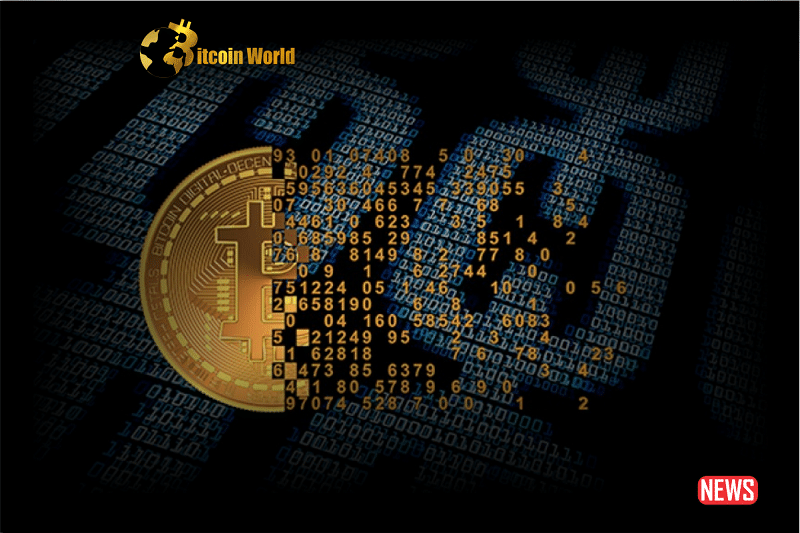Imagine a world where financial transactions are faster, cheaper, and more transparent. While the buzz around cryptocurrencies often dominates headlines, a groundbreaking report suggests the underlying technology, Distributed Ledger Technology (DLT), holds immense potential to revolutionize the very foundations of traditional finance (TradFi). Could this be the key to unlocking significant cost savings and efficiencies in the established financial world?
The $100 Billion Opportunity: Can DLT Deliver?
According to a recent report by the Global Financial Markets Association (GFMA), a leading lobby group for traditional financial institutions, the answer is a resounding yes. The report, developed in collaboration with Boston Consulting Group (BCG) and other industry experts, estimates that implementing DLT in traditional markets could slash costs by a staggering $100 billion or more each year. That’s a number that’s hard to ignore!
What Exactly is Distributed Ledger Technology?
Think of a shared, digital record book that’s distributed across multiple computers. This is the essence of a distributed ledger. Unlike traditional databases managed by a central authority, DLT allows for a transparent and tamper-proof way to record transactions and data. Blockchain, perhaps the most well-known example, is a specific type of DLT.
Adam Farkas, CEO of the GFMA, aptly puts it: “Distributed ledger technology holds great promise for driving growth and innovation. This potential should not be ignored or prohibited in areas where regulatory oversight and resiliency measures already exist.”
Where Will These Savings Come From?
The report highlights several key areas where DLT can significantly impact efficiency and reduce costs:
- Streamlining Collateral Processes: Derivatives and lending markets involve complex collateral management. DLT can automate and simplify these processes, potentially saving another $100 billion annually.
- Automating Clearing and Settlement: Smart contracts, self-executing agreements written in code and stored on a DLT, can automate and strengthen the often lengthy and costly clearing and settlement processes. This alone could save $20 billion per year in overhead.
The Breakdown: Which Areas Benefit Most?
Let’s take a closer look at where DLT is poised to make the biggest impact:
| Area | Potential Impact |
|---|---|
| Clearing and Settlements | Significant benefits through automation and increased efficiency. |
| Custody and Asset Servicing | Substantial improvements in security and transparency. |
| Primary and Secondary Trading | Less direct impact, but tokenization could enhance risk mitigation and liquidity. |
Real-World Examples: DLT in Action
The adoption of DLT isn’t just theoretical. Major players in the financial world are already exploring and implementing the technology:
- Euroclear: This European securities clearing giant, managing trillions in assets, announced plans to integrate DLT into its settlement processes. This signals a significant move towards mainstream adoption.
Not Without Its Hurdles: The Challenges of DLT Integration
While the potential is immense, integrating DLT into existing financial infrastructure isn’t without its challenges. The Australian Securities Exchange (ASX) serves as a cautionary tale. Their decision to abandon a DLT-based upgrade to their clearing and settlement system highlights the complexities and potential pitfalls involved. This setback cost them a significant sum, emphasizing the need for careful planning and execution.
Looking Ahead: A Tokenized Future?
The GFMA report arrives on the heels of another significant prediction. Citi investment bank forecasts a $5 trillion global market for blockchain-based tokenized assets by 2030. This convergence of reports underscores the growing recognition of DLT’s transformative potential in the financial landscape.
Key Takeaways and Actionable Insights:
- Significant Cost Savings: DLT offers a clear path to substantial cost reductions in traditional finance, particularly in collateral management and clearing/settlement.
- Increased Efficiency and Transparency: Automation through smart contracts and the inherent transparency of DLT can streamline processes and enhance trust.
- Gradual Adoption: While the potential is huge, the integration of DLT will likely be a gradual process, requiring careful planning and overcoming existing infrastructure challenges.
- Regulatory Considerations: Clear and consistent regulatory frameworks are crucial for fostering innovation and ensuring the safe adoption of DLT.
- Further Exploration is Key: Traditional financial institutions and regulators need to actively explore and pilot DLT solutions to fully realize its benefits.
The Bottom Line: A Paradigm Shift in Finance?
The GFMA report serves as a powerful reminder that the technology underpinning cryptocurrencies has the potential to revolutionize traditional finance. While challenges remain, the potential for significant cost savings, increased efficiency, and enhanced transparency is too compelling to ignore. As DLT continues to mature and adoption grows, we could be witnessing the dawn of a new era in global financial markets. The $100 billion question isn’t *if* DLT will impact TradFi, but rather *how quickly* and *how comprehensively* it will reshape the financial landscape we know today.
Disclaimer: The information provided is not trading advice, Bitcoinworld.co.in holds no liability for any investments made based on the information provided on this page. We strongly recommend independent research and/or consultation with a qualified professional before making any investment decisions.


